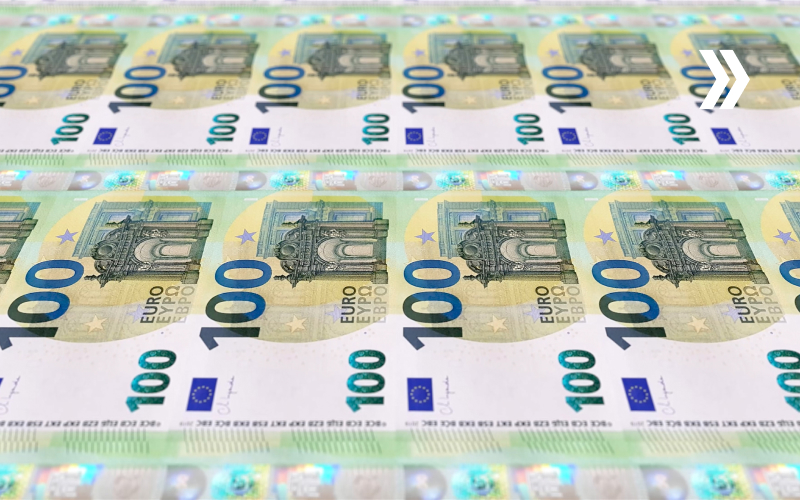
Before the Covid pandemic, during the calendar year of 2019, Europe’s global share of e-commerce was only about 10%, roughly equating to $340 billion. That year, however, e-commerce grew more than 15% in Eastern Europe. In Western Europe, it grew by more than 10%. While the Eastern market outpaced the Western market, it was largely due to Western consumers being more familiar with and attuned to digital purchasing. Eastern consumers, however, were still discovering the convenience of buying online. Move forward a few years, and the numbers and percentages have changed. Analyzing 2020 is difficult to do as the pandemic presented both merchants and consumers with many unique challenges.
As consumers and merchants moved to tackle these unique challenges, the market rapidly gained in sales. Nearly 300 million consumers started shopping online more often during 2020, representing a growth of nearly 12 million new digital consumers over the previous year. While it cannot be expected that these numbers will maintain themselves in future years that do not have the challenges that the Covid pandemic brought, there is still much that can be taken from the data.
Consumer Habits Have Changed
When looking at the data, habits are an important part of the equation. Most people will buy the products that they previously purchased at the places they previously purchased them from. Whether basic electronics, groceries, or other types of food, consumers often reach an inflection point in their spending. Getting them to change their habits can be a difficult challenge for businesses. The pandemic moved people more solidly into the online world for their purchases.
Also, many studies have been done regarding the milestones in which a person’s natural inflection points can lead to a shift in spending habits. These include pregnancy, a death in the family, moving to a new home or city, changing careers, and others. More recent studies are now showing that the pandemic is likely changing spending habits in similar ways. The change is being seen as broad, affecting millions of consumers, and it is incentivizing many people to become digital customers online rather than visiting brick-and-mortar stores. This can have long-term effects on how people shop in the future, and many businesses are starting to take note.
Consumer Mentalities Change As The Pandemic Continues
With the pandemic still occurring, a more clear picture seems to be taking root. Earlier in the pandemic, there were many unknowns. Now, it is becoming more generally accepted that elements of the pandemic may extend into future years in some capacities. With parts of the world being unable to obtain vaccines, regions refusing to make use of the vaccines, and new variants continuing to pop up across the globe at an alarming rate, millions of households are in a very similar condition as earlier in the pandemic. The longer people’s spending is altered, and the more it continues to change, the more likely these habits will stick around. Centrobill is taking note of these changes and helping businesses and consumers move towards the future. Staying competitive in a fast-paced and more prominent e-commerce world is essential for business.
E-Commerce Of The Future In Europe
The future of e-commerce in Europe will look different than in 2018, with individual areas preparing for new growth trends continuing to move in new directions. The United Kingdom is currently the third-largest e-commerce market, trailing only the United States and China. All three of these economies have same-day delivery available, which is notable. As the third country to offer same-day shipping, the UK is also working closely with Amazon Shipping extensively.
For people living in countries with advanced logistics, the idea of same-day delivery is often taken for granted. The rapid deployment of items purchased online has had a massive impact on consumer decision-making, with people wanting to get their products faster. People find themselves ordering from home and getting the item about as quickly as it would take them to schedule a trip and travel to a brick-and-mortar store in person.
In addition to the new advancements in shipping, consumers are also becoming more conscientious of the environment. Logistics without sustainability, according to surveys, will not lead to continued e-commerce growth. The largest retailers in the world are investing heavily in expediting the delivery of items while also paying attention to reducing emissions, shrinking unnecessary packaging materials, and reducing their carbon footprint. As long as consumers see efforts towards improving eco-footprints and providing high-speed delivery, consumer mentalities are likely to trend the direction they have been.
The Future Of Returns And The Need For Secondary Markets
It is essential to note that logistics are often a two-way path. Your e-commerce business needs to focus both on delivering to clients but also on anticipating returns in some cases. Digital consumers’ mentalities have changed, and many people are buying several versions of the same item to make sure they get the best product. This is called “bracketing.” This process creates an added cost for merchants, though a strong secondary market can offset some of those costs. Europe is leading the way when it comes to this.
Secondary markets help reduce expenses for merchants by offsetting the costs of having inventory returned. They are restocking or refurbishing items for subsequent retail. For some businesses, setting up an online auction dynamic where targeted buyers compete to purchase merchandise can cause prices to rise. When a secondary market is properly integrated, the merchant can also scale it as market conditions change their needs.
Maintaining Channel Control Is Crucial
Setting up an online auction dynamic is one way to help businesses maintain control over who is buying the inventory and how it enters the secondary market. Your primary inventory and secondary inventory can be sorted and tracked independently. The benefits being that over-stock items can be sold to some consumers, while other consumers are offered only the primary inventory. The database you have of past customers can give you important insights on where to categorize each consumer to get the maximum value per transaction. Using Centrobill, you can control who sees your merchandise, which channels they are getting access to, and who is allowed to buy it. You can decide how to allocate each of these permissions, and the experts at Centrobill are always available to assist.
Factors To Consider For Channeling Your Consumers
Volume
When it comes to wholesalers, larger lot purchase agreements and greater dollar volume can come from presenting a secondary market offer.
Online Auctions
Even though primary inventory is likely to earn the most if offered at a fixed price in European markets, secondary market items are often made available via dynamic online auctions. This spurs competition among consumers. The stronger growth in Eastern European markets lately has been affected by these trends.
Sustainability
Consumers are looking for a smaller eco-footprint, which is better for everyone’s bottom line. This is most true with Generation Z consumers, who value eco-friendly merchants above others.
E-Commerce In Europe Is Now About “Where” Not “If”
People are shopping online. It is not a question of whether they will do it; they will. This means the focus is less about educating consumers about the benefits of shopping digitally. Rather, the focus is moving towards gathering digital consumers to your virtual marketplaces rather than having them shop in other places online.
As a whole, Europe still sees variation from one country to the next. The percentage of people who purchase groceries online, for example, can vary drastically. In the UK and France, e-commerce penetration reached approximately 50% in late 2020. Other countries, such as Germany, saw these rates of penetration at just over 20%. There is immense opportunity for e-commerce growth, both in countries with higher penetration percentages and those that are still moving towards catching up.
Evaluating The Impact Of E-Commerce Both On- And Offline
E-commerce is growing quickly, in some cases seeing more than 15 times higher growth than the off-line growth rate. Many countries are seeing higher than seven times the off-line growth rate, with variations from one country to the next. While e-commerce was always going to transform retail, the Covid pandemic has accelerated this trajectory. 2020 has proven the viability of e-commerce, as well as its necessity.
Insights On E-Commerce In Europe
At Centrobill, you can get insights on e-commerce in Europe easily. E-commerce has evolved since pre-Covid times, so using the most comprehensive measurements available is essential. The team at Centrobill is ready to help you prepare for the next phase of e-commerce growth.
Capitalizing On E-commerce Growth
Centrobill is happy to answer your questions. As e-commerce continues to mature in Europe at a fast rate, it is time to prepare for the next phase of online growth. There are many ways that retailers and manufacturers can prepare for success in the near term. Make sure you understand the playing field and that you have a fantastic team behind you. Finding an exceptional team can help you understand your e-commerce maturity stage and help you to get to the next level. Centrobill continues to work extensively with merchants operating in the EU, as well as those in the United States, Eastern Europe, and many other places around the globe.
The team of experts here helps our partners apply what is already working in other regions to their businesses locally as they keep with future trends. Whether your revenue streams are part of a worldwide campaign or have a focus on your local community, Centrobill has the tools needed, and the experience necessary, for both. Contact us to learn more and increase your earnings today.


